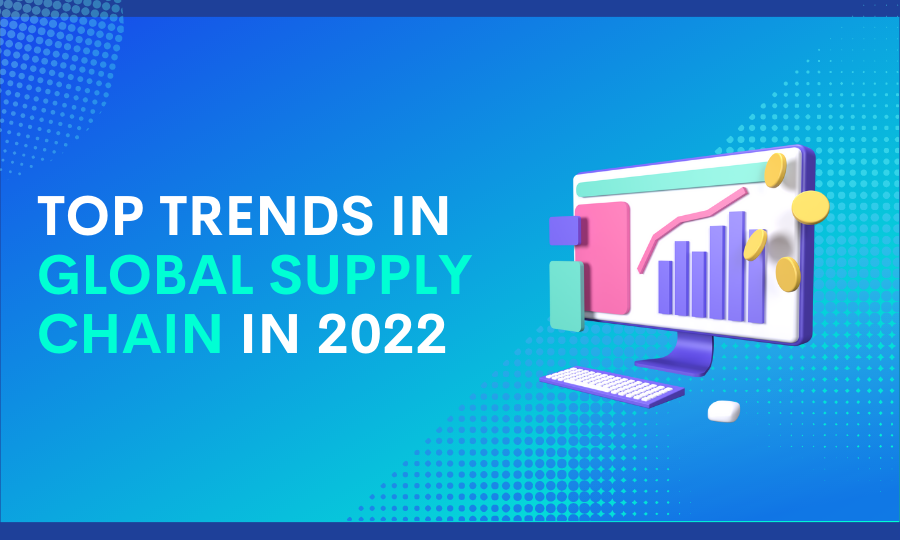With customers turning to eCommerce purchases as a way of life since the pandemic, businesses are consistently advancing to conquer operational challenges that the space presents. To be future prepared and ahead of developing customer needs, it’s a good idea for organizations, manufacturers, and 3PLs to remain up to date about the market trends.
Ecommerce and Logistics Highlights in Q1 2022
Last year’s difficulties continued into Q1 this year. Organizations’ capacity to get the right to advertise endured against the background of plant closures, port deferrals, and record-low modern opportunity rates. As the stock ran out, void racks both physical and advanced mean lost deals and brand reliability.
One of the most significant deals was the birth of a new Chinese logistics juggernaut in December 2021. The China Logistics Group, with a registered capital (the amount of capital that a company is allowed to get from selling shares) of $4.7 billion, was formed by a merger of five state-owned companies and is the country’s largest logistics player by revenue. By bringing together the former China Railway Materials Group.
Key Insights for Q1 2022
Brands faced major monetary ramifications from stockouts. Empty racks cost retailers and brands a huge number of dollars. Upwards of 55 million customers did not get to buy items as expected, disintegrating dedication at a retailer and brand level.
- 60% of consumers have recently encountered stockouts, as per a new McKinsey study.
- 70% of those who did, switched brands instead of waiting for the product. Only 13% waited on restocks.
- Retailers lost $4.6 billion from stockouts during 2021’s Black Friday shopping event.
- Countless upstream supply chain challenges are resulting in these costly logistics failure.
Ecommerce Trends That Will Shape The Logistics Industry in Q2 2022
Due to far-reaching stockout issues and the stakes attached to them, organizations are re-examining their obtaining, assembling, transportation, and stock administration practices to relieve upstream disturbances and work on better in-stock rates. Nonetheless, finding some kind of harmony between ‘in the nick of time’ stock and an excessive amount of well-being stock remains key to addressing the present supply chain volatility. Here are a few trends we predict:
Trend #1 – A Rise in D2C (Direct to Consumer) Fulfilment
A relatively new business model in the eCommerce logistics sector is the direct-to-consumer (D2C) strategy, where brands produce, market, and sell products directly to the consumer themselves, doing away with any middlemen.
D2C businesses can also experiment with distribution models, from shipping directly to consumers, cross border shipping or partnering with third-party fulfilment providers. 3 PL partners like Floship are flexible with different logistics models and can not only help with shipping the products and providing updates to the customers about where their orders are but also giving them real-time information about when they can expect their products.
Trend #2 – Smart Software Applications for Improved Service
Whether you’re getting goods across the world from manufacturers to your warehouse, or shipping from them to a third-party warehouse/fulfilment partner, or from your manufacturing facility to a 3 PL provider — there’s a need for more transparency and better quality assurance (QA) in logistics even before the customer places an order.
Such use of data improves transparency and enables real-time visibility of the shipment because, with real-time location and condition data, problems can be readily discovered and tackled. This, in turn, boosts efficiency and reduces downtime. Floship’s platform allows suppliers and customers to collect, and monitor logistical data of goods across the supply chain to identify trends and improve the efficiency in the order fulfilment process.
Trend #3 – Emphasis on More Branded Shipping Experiences
For eCommerce businesses, premium packaging can be a powerful way to brand the shipping experience, as a customer may share a photo or upload an unboxing video of the delivered package on social media. The freshly arrived package creates the first impression of a product, and when done right, it solidifies brand identity and inspires word of mouth.
So, to brand the shipping experience, eCommerce retailers are now investing in improving their product packaging with branded visuals, real-time tracking solutions, shipping labels, personalized pick and pack options, and so on.
Trend #4 – All eyes on Sustainability
People now prefer a brand that is actively making sustainability efforts to become greener. Over 70% of consumers would pay a 5% price premium for products of equivalent quality produced by more sustainable means. This will extend itself into logistical solutions in terms of efficiency and consolidation.
Trend #5 – Solving the last mile problem.
The last mile refers to the final phase of the order fulfilment process when the order is being delivered to its final destination (i.e the customer). It is one of the most pivotal parts of eCommerce logistics as it entails the final, direct touchpoint with the customer. And so, it greatly influences the overall delivery experience and customer satisfaction. As the nitty-gritty of the final delivery — location, traffic conditions, special customer requests, or even government regulations — varies widely for each customer, 3PL companies that ensure good last mile delivery will be favoured over others.

Ready To Upgrade Your Logistic Solution?
Speak to Floship ecommerce logistic consultant about improving your global support chain today




